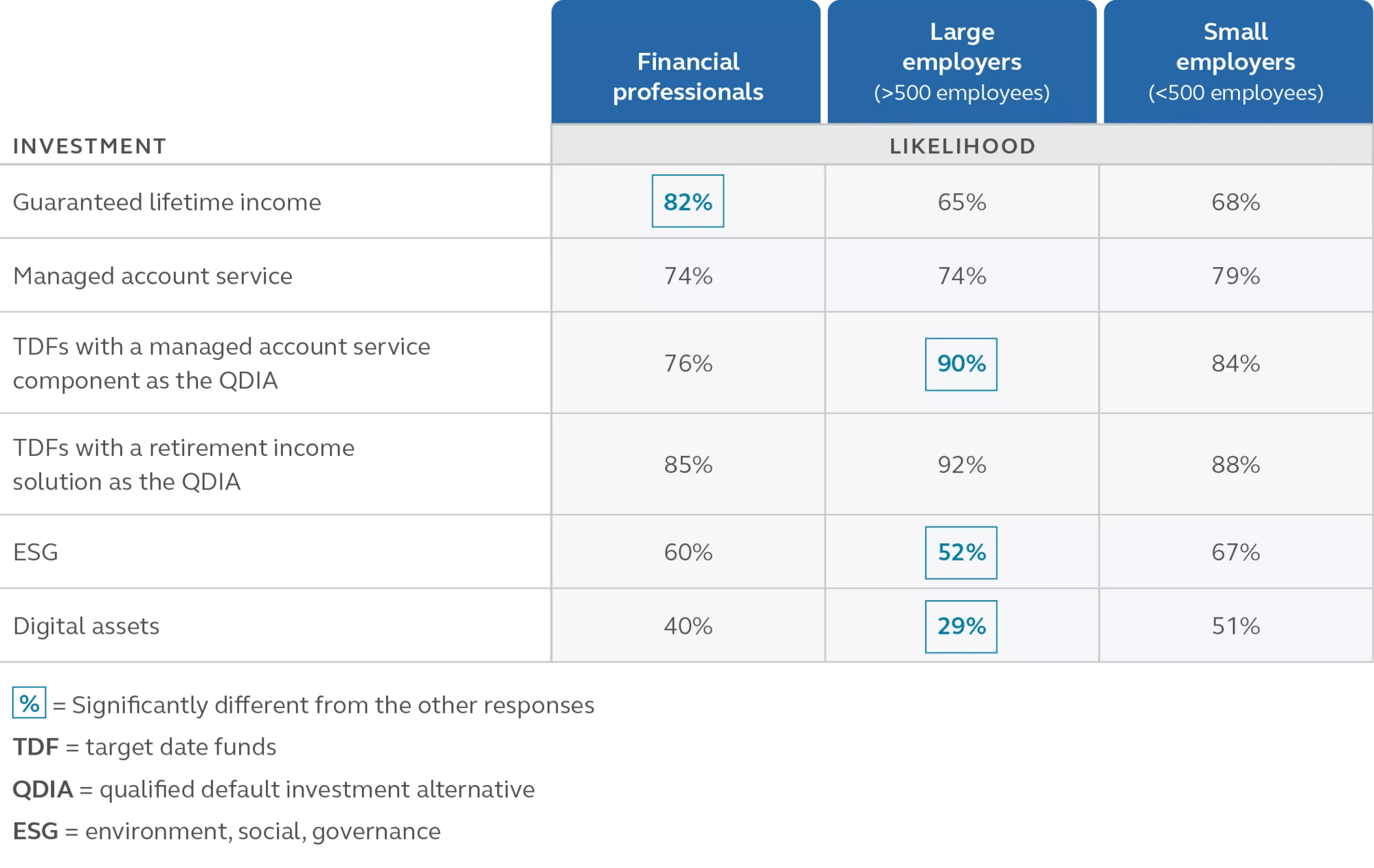Transformation of the retirement industry is underway. Explore how to get ready for the demands of Gen Z, new retirement investments, and phased retirements.

The retirement industry seems to be on the cusp of a major transformation that hasn’t been seen since the introduction of the 401(k) in 1978.1
The Principal® Future of Retirement survey asked both financial professionals and their clients—sponsors of employer retirement plan (employers)—how they see the retirement industry by 2030.2
Get all the insights from the Principal® Future of Retirement survey (PDF).
The Growing retirement savings gap
Survey respondents say that by 2030 the shortfall between how much money people need to retire comfortably and how much they’ve saved will continue. Some of the ongoing hurdles affecting the savings shortfall include access, participation, and putting away too little, too late. To help alleviate these issues, both state and federal legislators have passed ground-breaking legislation that can make it easier for workers to save for retirement.

Workers who don't have access to a defined contribution plan at work.3

Workers who have access to a defined contribution plan, yet don't participate.3

Workers who participate in employer-sponsored retirement plan yet feel they're not saving enough.4
Insights into action: How new legislation may affect plan sponsors, organizations, and retirement savers (PDF).
How the aging workforce is transforming employer retirement plans
The age of the American workforce is shifting. The U.S. Bureau of labor Statistics estimates that the number of people 75 and older in the labor force is expected to grow 96.6% by 2030.5 People are living longer and therefore working longer. Which might make “60 is the new 40” the slogan for 2030.
The global pandemic continues to reshape how employers use benefits to recruit and retain employees whose mindset and expectations have changed. This includes:
- Shifting focus from enrollment to the holistic retirement process.
- Expanding access to retirement benefits for non-traditional employees.
- Approaching a phased retirement for pre-retirees.
Retirement plans may become holistic financial wellness benefits
The global pandemic flipped a switch for many workers, exposing their need for more focus on their total well-being: mental, physical, and financial. This awakening now serves as a catalyst for employers to transform their offerings from what may be a piecemeal collage of benefits into a holistic program that supports the needs of the whole employee.
Top financial wellness offerings besides retirement savings

Retirement income planning (estate planning, will prep, income planning, retiree health expenses, RMDs)

Credit card and debt counseling

Establishing a budget, financial plans and goals, insurance needs

Health care planning for early retirees

Emergency savings program

Investment education
Over 90% of both financial professionals and employers agree that financial wellness offerings will increase by 2030 and over 75% say they could see a paradigm shift in the future. One in which retirement benefits would be one part of a larger well-being program instead of a stand-alone benefit.
The evolution of retirement investments and advice
In-plan retirement investment options will likely continue to develop as we move away from a defined benefit retirement system. It’s becoming increasingly important to help pre-retirees understand how to turn the savings from their 401(k)s and Individual Retirement Accounts (IRAs) into income in retirement.
Types of investments that may become more common by 2030

More personalization and advice
Three in 4 financial professionals and employers feel that a common investment offering by 2030 will include personalization investment portfolios. And this personalization will likely overflow to providing some form of advice to employees. The majority of our respondents (90%) believe advice will come from a financial professional. However, 81% of employers also feel it will also come through a digital advice tool, whereas only 69% financial professionals feel this way.
How Gen Z is shaping the retirement saving experience?
Born between 1997 to 2012, the Zoomer Generation is beginning to enter the workforce and is already starting to have an impact on the retirement industry. Both the financial professionals and employers in our survey see Gen Z disrupting the retirement market because they:
- Prefer to conduct their financial business online
- Adopt fintech tools and digital applications more easily
- Are more receptive to financial services from tech companies such as Google, Apple, and Amazon vs. traditional financial companies
- Believe in a diverse and flexible workplace and desire more non-traditional benefits
- Are highly sensitive to business sustainability and interest in ESG investment options
- Expect companies to “know them” and provide offerings to be personalized to their needs
Today's conversation for tomorrow's retirement
These five retirement disruptors identified by financial professionals and employers aren’t mutually exclusive. They each propel the other into changes that could impact the retirement industry by 2030. We see these as an opportunity to start a conversation with all those impacted. It’s never too early to start thinking about the future.
Get all the insights from the Principal® Future of Retirement survey (PDF).

